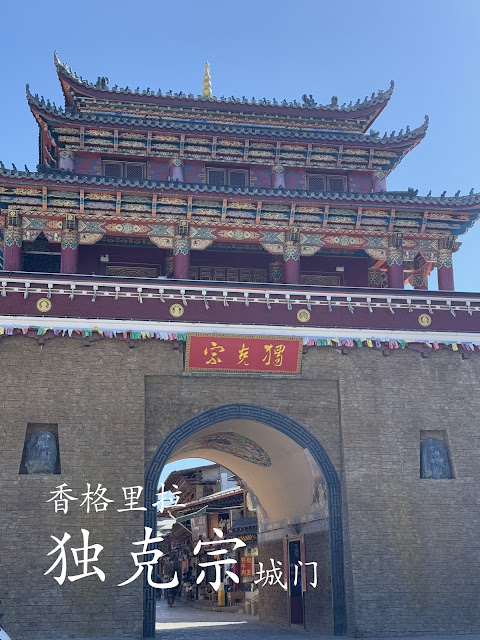The Tibetan pronunciation of the name “Dokezong” has two meanings, one is “castle built on stone” and the other is “moonlight city”. A treasure trove of ancient Tibetan architecture, traditional handicrafts, and a local way of life, Dukezong Ancient Town is iconic site in Shangri-La.
In January 2014, a fire lasting over ten hours broke out destroying most of the town. There were no injuries or deaths reported, but over two thousand six hundred people had to be evacuated. Many buildings, including one statue that was from the seventeenth century, were destroyed.
Sources:
https://www.chinaxiantour.com/shangri-la-attractions/dukezong-ancient-town.html
独克宗古城位于云南省迪庆藏族自治州香格里拉市中部,地处中甸盆地建塘镇,为香格里拉(杰地、杰塘、中甸)历史上的重要城镇和驻兵地,亦为茶马古道滇藏段重要途径驿站。独克宗古城以大龟山为中心,呈放射状扩展布局,面积1.5平方千米。“独克宗”,为藏语古地名,又称“宗绕丹噶波”“达维宗”,意为“月光城”。与位于奶子河畔的“尼旺宗”—太阳最早升起的“日光城”遥遥相望,日月同辉,被称为“心中的日月”。
Source:
独克宗古城位于云南省迪庆藏族自治州香格里拉市中部,地处中甸盆地建塘镇,为香格里拉(杰地、杰塘、中甸)历史上的重要城镇和驻兵地,亦为茶马古道滇藏段重要途径驿站。独克宗古城以大龟山为中心,呈放射状扩展布局,面积1.5平方千米。“独克宗”,为藏语古地名,又称“宗绕丹噶波”“达维宗”,意为“月光城”。与位于奶子河畔的“尼旺宗”—太阳最早升起的“日光城”遥遥相望,日月同辉,被称为“心中的日月”。
Source:
https://baike.baidu.com/item/%E7%8B%AC%E5%85%8B%E5%AE%97%E5%8F%A4%E5%9F%8E/8643301
~~~~~oo0oo~~~~~
Among the ancient cities/ towns, I find Dukezong is the only one with its character kept most intact. Probably because it offers something very different from others - its Tibetan roots, which is clearly shown through its architecture.
I could be biased too because it comes with so much things that are close to what I'm familiar with - the Bhutanese culture, look and feel, the religion, the prayer wheel, etc. Ah! It rings a bell, it's not call "ancient city" but a "zong".






